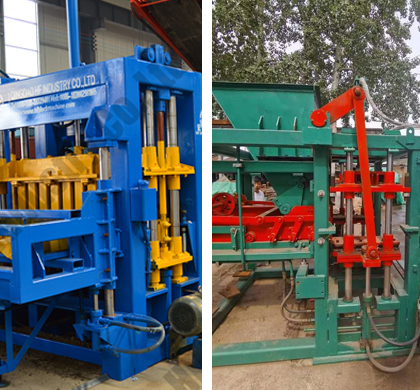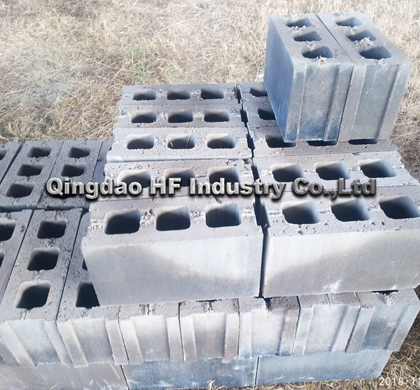The first step in maximizing the potential of a brick making machine is to select the right machine for the job. Consider factors such as the size of the bricks you need to produce, the production capacity required, and the specific features and capabilities of the machine. Choosing a machine that is well-suited to your needs will help ensure optimal performance and efficiency.

Brick making machines play a crucial role in construction projects, offering efficiency and precision in producing quality bricks. Whether you're a seasoned professional or a newcomer in the field, unlocking the full potential of these machines requires a comprehensive understanding of their operation, maintenance, and optimization. In this guide, we'll explore essential tips and tricks to ensure optimal usage and maintenance of brick making machines.

1. **Familiarize Yourself with the Machine**: Before diving into operation, take the time to thoroughly understand the different components of the brick making machine. Familiarize yourself with the functions of each part, including the mixer, conveyor belt, molding unit, and hydraulic system. This knowledge will empower you to operate the machine confidently and troubleshoot any issues that may arise.

2. **Follow Manufacturer's Instructions**: Manufacturers provide detailed manuals and guidelines for operating their brick making machines. Always adhere to these instructions meticulously. They often include essential information regarding safety precautions, operational procedures, and maintenance schedules. Ignoring manufacturer guidelines can lead to inefficiencies, breakdowns, or even safety hazards.

3. **Optimize Raw Material Selection**: The quality of bricks produced depends significantly on the raw materials used. Select high-quality clay, sand, cement, and other additives to ensure the durability and strength of the bricks. Conduct regular tests to assess the suitability of raw materials and make necessary adjustments to achieve the desired brick specifications.

4. **Maintain Optimal Moisture Content**: Proper moisture content is critical for the molding process. Excess moisture can lead to cracking and shrinking, while insufficient moisture results in weak and porous bricks. Monitor the moisture content of raw materials consistently and adjust as needed to maintain optimal levels. Investing in moisture meters can streamline this process.

5. **Calibrate Machine Settings**: Brick making machines offer various adjustable settings, including pressure, speed, and temperature. Calibrate these settings according to the specific requirements of your brick production. Experiment with different configurations to find the optimal balance between efficiency and brick quality.

6. **Regular Maintenance Checks**: Preventive maintenance is key to prolonging the lifespan of your brick making machine and minimizing downtime. Establish a routine maintenance schedule that includes inspecting all components, lubricating moving parts, and replacing worn-out or damaged parts. Addressing minor issues promptly can prevent them from escalating into major problems.

7. **Cleanliness is Essential**: Keep the machine clean and free from debris, dust, and residue accumulation. Regularly clean the mixing chamber, conveyor belts, and molds to prevent contamination and ensure consistent brick quality. Pay special attention to areas prone to buildup, such as corners and crevices.

8. **Invest in Training and Skill Development**: Proper training is indispensable for operators to maximize the efficiency and performance of brick making machines. Provide comprehensive training programs for your team to enhance their skills in machine operation, maintenance, and troubleshooting. Encourage continuous learning and skill development to stay updated with the latest advancements in brick making technology.

9. **Monitor Performance Metrics**: Utilize performance metrics and data analytics to track the productivity and efficiency of your brick making operation. Measure key indicators such as production output, material consumption, energy usage, and downtime. Analyze these metrics to identify areas for improvement and implement targeted strategies to optimize performance.

10. **Stay Updated with Industry Trends**: The field of brick making is constantly evolving with advancements in technology, materials, and techniques. Stay informed about industry trends, innovations, and best practices through participation in conferences, workshops, and online forums. Embrace new technologies and methodologies that can enhance the capabilities of your brick making machine.

Finally, it is important to monitor the performance of the brick making machine and make adjustments as needed to optimize its operation. Keep track of factors such as production output, brick quality, and energy consumption, and make adjustments to the machine's settings or operating procedures as necessary. By monitoring performance and making adjustments, you can ensure that the machine is operating at its full potential and producing high-quality bricks efficiently.


The Molding Vibration Block Machine has a short forming cycle and high production output. The continuous increase in vibration frequency during material feeding and forming vibrations reduces the feeding time by 3 to 4 seconds. The table vibration machine

Brick manufacturing has been an essential part of construction for centuries, providing durable and aesthetically pleasing building materials. However, the process of producing bricks is not without its challenges. As the world becomes more environmentall

Whether for inquiries for inspections and
maintenance, for individual plant optimizations or
extensions, or spare and wear parts.

Our after-sales service is at your disposal for all
questions

Gemini Tower, Block B, Chunyang Road, Chengyang District, Qingdao, China
Show on the Map
We will contact you within 24 hours.